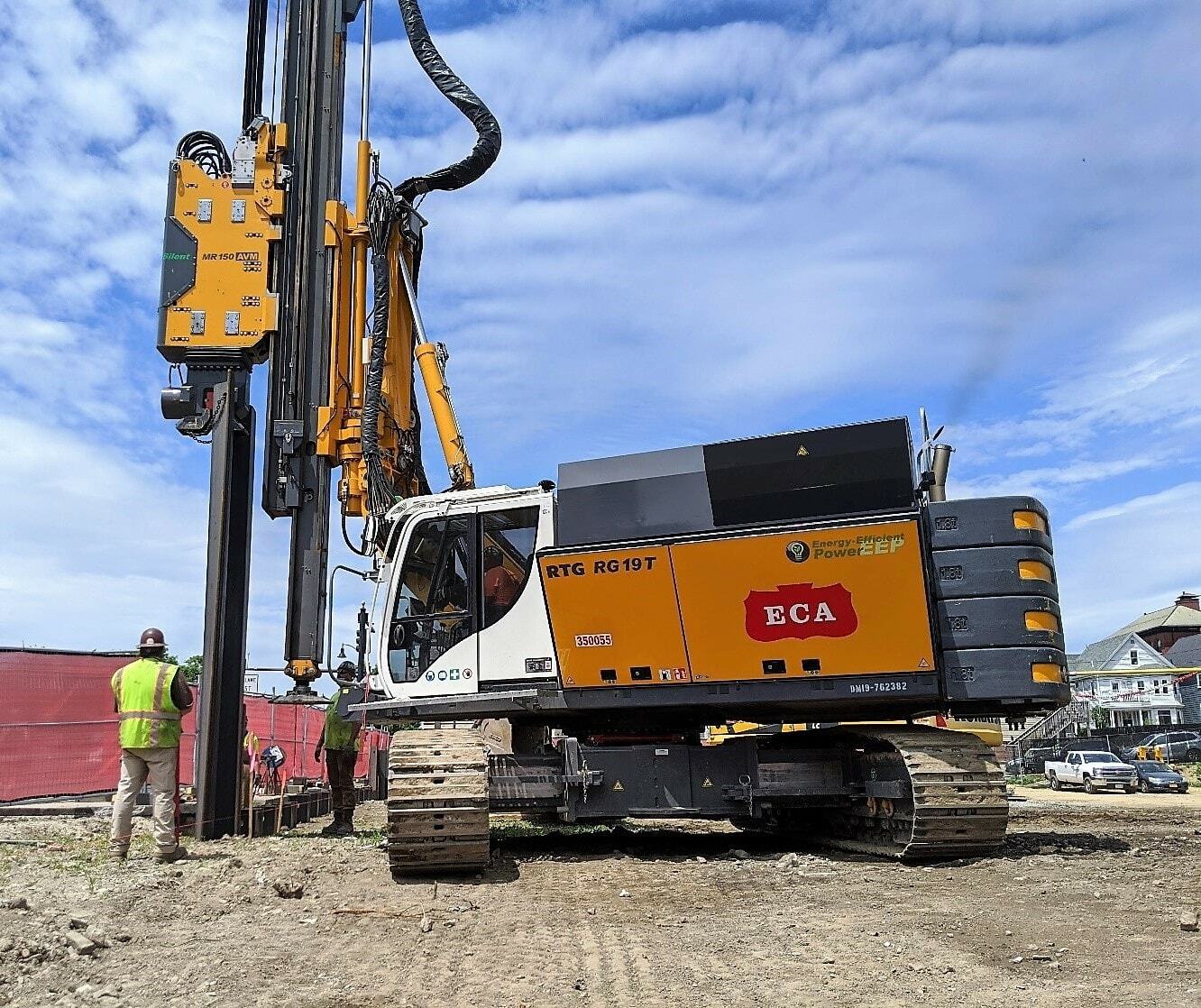How RTG is Making Improvements to Reduce Noise and Vibration
Jan 18, 2022

Originally published in Pile Driver
- - - - -
RTG Rammtechnik GmbH is a subsidiary of the BAUER Group and focuses on the development and sale of piling rigs. Equipment Corporation of America (ECA) has been representing RTG since 2005 when we became a dealer for RTG and BAUER for the Eastern United States. Within the past 16 years, ECA has observed several changes to the equipment focusing on the reduction of sound and vibration. These benefits are appreciated by our customers who are faced with frequent concerns from neighboring businesses and residents in proximity to their pile driving operations. RTG understands that improvements made to their equipment is a value add that can help the customer in situations where noise and vibration regulations exist.
The Silent Vibro
In 2017, RTG developed the Silent Vibro. There were five main modifications made to decrease the decibel levels and noise emissions. The first was the introduction of noise insulation of the vibro housing and complete encapsulation of the front section including hydraulic motors. RTG also integrated the hydraulics insulation in the housing, which helps to reduce sound levels. The next modification was the noise insulation between the housing and pile clamp with a flexible form element. Finally, noise reduction modifications in the area of lifting chains and connection points round out the noise advancements made to the newly developed Silent Vibro.
What does this all mean in terms of data? When running the “old style” hammer in a standard chain and sheet pile application, RTG measured decibel levels from 120 dB(A) – 123 dB(A). When testing with the “Silent Vibro” in a chain and sheet pile application, they measured decibel levels from 114 dB(A) – 116 dB(A). That is a reduction of 6-7 dB(A)!
Automatic Noise Protection Flaps
Another major improvement made by RTG in recent years was the introduction of the Automatic Noise Protection Flaps. When engine emissions were the main issue the industry was facing several years ago and manufacturers worked on converting from Tier 3 to Tier4i, and eventually Tier 4f, RTG used this opportunity to make additional modifications. The first was to change the base carrier from an old style BS60RS to a new and improved BS65RS. Fully automatic ventilation flaps were developed for integrated noise protection along with unchanged transport dimensions. This is accomplished by having the noise travel vertically instead of horizontally. Another small adjustment was covering the exhaust pipe for additional noise emissions and corrosion protection. These two additional modifications, along with the Silent Vibro, are the main reasons that contribute to the 114 dB(A) rating on the RTG piling rigs.
ECO-Mode
With the advancements to Tier4F engines becoming a standard in the U.S. and Europe, RTG and BAUER developed an Eco-Mode option. This allows the machine to achieve a fuel consumption savings of 20 percent. This also improves noise reduction. When running the Eco-Mode option, the data shows that the machine can operate at 112 dB(A). On average, the data shows a reduction in noise emissions by approximately 3 dB(A).
Variable Moment Hammers
At ECA, every piling rig that enters our rental fleet has a variable moment hammer. The one we most commonly order is the MR 150 AVM. This hammer starts up in a free wheel mode until it reaches the desired speed. Once that speed is reached, the hammer engages the eccentrics. This action drastically helps with vibration control. A similar function is also performed when powering down a hammer. The eccentrics are disengaged before the speed of the hammer starts to slow down.
Another contributing factor that helps with vibration control is the ability to adjust the speed of the vibratory hammer. The faster the speed of the hammer, the less vibration it produces. Dialing in the amplitude of the hammer gives you the ability to adjust to different soil conditions, which gives you control over its output and vibration.
Down Crowd
A very important feature that exists with all RTG machines is the ability to introduce down crowd. In theory, the faster you can install a pile or sheet, the less time you will be sitting on top of it. That in itself is an added benefit of controlling the duration of vibration on site.
Lastly, when introducing down crowd on sheets, you are putting tension on that individual sheet, which helps with vibration and noise. The less the sheet shakes, the less noise it creates on your jobsite.
In conclusion, the advancements made from RTG are a value add that we can supply to our customers. ECA has been approached by clients in the past with noise and vibration concerns. These recent advancements allow us to provide a product that meets their noise and vibration hurdles. Improving productivity on top of that is a nice added benefit. At ECA, we are proud to represent a manufacturer like RTG that listens to its clients, pays attention to industry concerns, and adapts its products to address customer’s needs.
###
